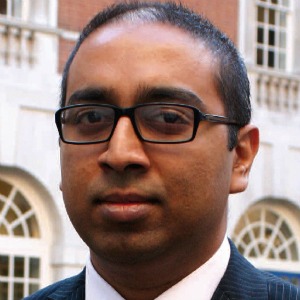GPC to push for more equitable funding for practices taking on medical students

Exclusive The GPC is to campaign for practices to receive fair funding for taking on medical students, after highlighting underexposure in medical school as a major factor in the current workforce crisis, Pulse can reveal.
GP leaders have identified boosting the number of high-quality placements on offer to undergraduates as a priority, after research found that just 14% of curriculum time is spent in general practice, a proportion which has not increased in over a decade.
Health Education England’s own GP Taskforce report on the crisis found that students who had been exposed to general practice in undergraduate education were much more likely to choose it as a specialism.
GPC officials told Pulse that the failure to invest properly in GP education and training had led to the current workforce crisis, and this needed to be addressed ‘as soon as possible’.
The announcement coincides with a review of the Service Increment for Teaching (SIFT) funding – which funds practices and hospitals to take on undergraduates – being run by Health Education England and the Department of Health.
The Society for Academic Primary Care (SAPC), which represents GP academics in discussions with the DH and HEE, fears the review could exacerbate the disparity between GP and hospital funding.
Currently hospitals receive £34,000 per student per year in SIFT payments, but payments for practice placements vary and, unlike hospitals, practices are not paid for premises costs incurred in making treatment rooms available to students.
Related stories
How is GP medical education funded?
GP training crisis begins in medical school, research suggests
The SAPC has identified that teaching costs in primary and secondary care are broadly similar, and warns further variation in funding would be ‘divisive’.
The GPC is not currently involved in the SIFT negotiations, but Dr Krishna Kasaraneni, chair of the GPC’s education, training and workforce subcommittee, told Pulse: ‘GPC is going to campaign for equitable funding for general practice undergraduate teaching, and make sure that undergraduates get good-quality general practice placements.
‘Funding, workload and capacity are the three main problems. We want to teach more medical students and play a role in teaching the doctors of tomorrow. We can only do it if the clinical workload allows it.
‘GP practices across the board should be receiving a uniform tariff based on the amount of time they spend teaching undergraduate medical students.
‘Some practices just don’t have modern enough facilities to host medical students either and we need the Government to invest in GP premises to address this as well.’
Exeter GP and SAPC secretary Dr Alex Harding told Pulse: ‘One of the main problems at the moment, for teaching students in general practice, is the lack of space. A student needs a separate room to see the patient in, to develop their own consulting skills, diagnostic skills, and the rest of it.
‘At the moment, there is no national formula for funding the space that medical students take up in general practice, and that is a big difference between teaching in GP and medical student teaching in hospitals, because hospitals receive a lot of money.’
Dr Harding added: ‘We want to be sure, as a profession, that the review group is going to adopt a clear methodology for funding general practice that is the same as the methodology they use for hospital costs.
‘We have found that… the costs of GP placements appear to be the same as hospitals.’
A spokesperson for Health Education England told Pulse the SIFT review was ‘ongoing and is something we are proactively engaging with GP surgeries about’.
The DH set HEE the task of having 3,250 GPs in training by 2015, though this was subsequently pushed back to 2016, however some parts of the country had as many as 40% of places unfilled this year, forcing an unprecedented third round of recruitment.
Pulse July survey
Take our July 2025 survey to potentially win £1.000 worth of tokens














